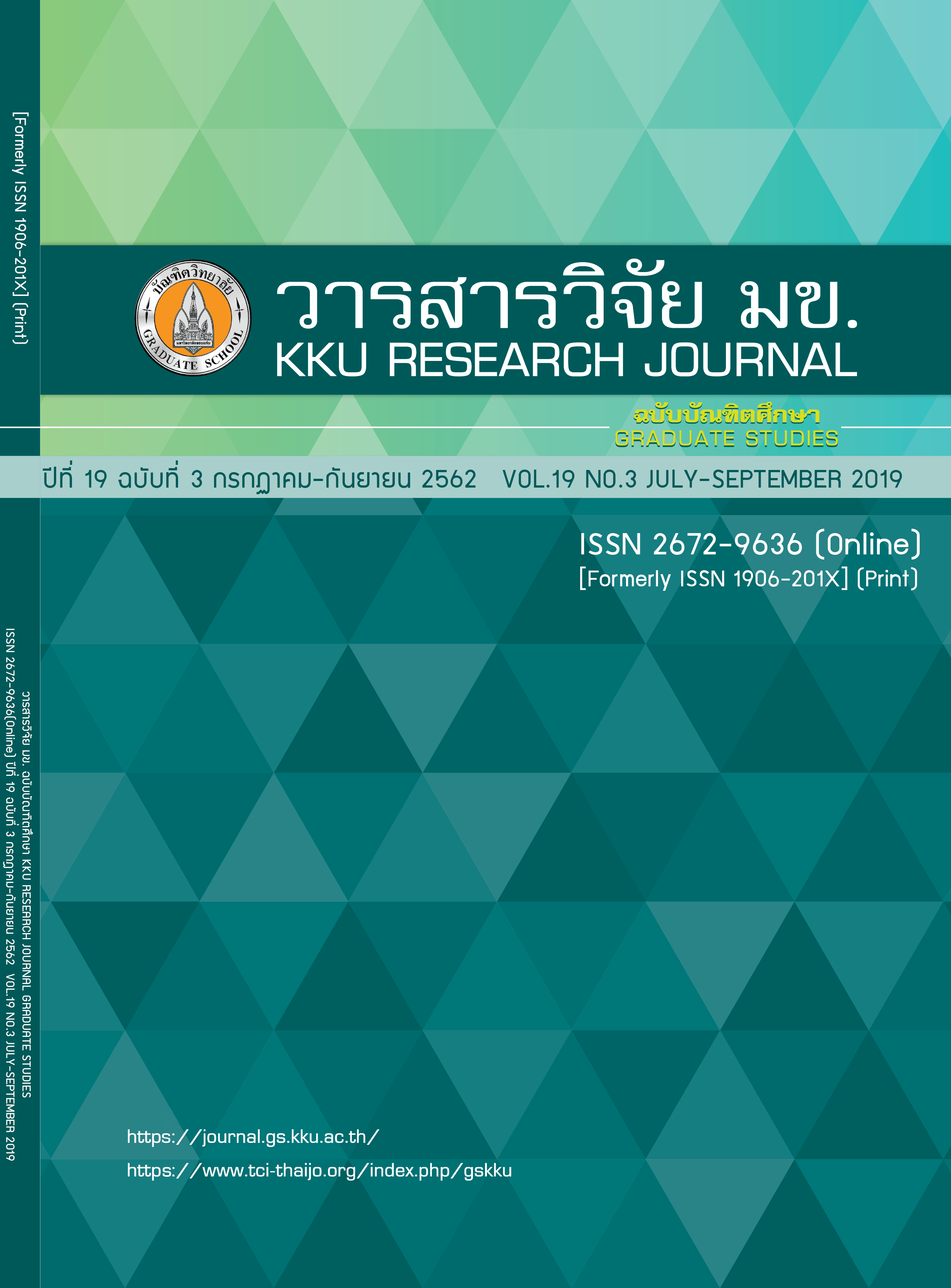Treatment of Natural and Synthetic Textile Dyestuffs by Water Sludge Sediment
Keywords:
Textile dyestuffs, Sludge sediment, AdsorptionAbstract
Treatment of 8 direct dyestuffs and 8 reactive dyestuffs from aqueous dyes solution were investigated onto powder and bead of sediment from water works process (WWP). It was found powder and bead of sediment had treatment of 2 dye groups The optimal conditions for treatment of 2 dye groups at SWWP (10 g.), dye concentration (40 mg/L) and contact time (60 minute). The isotherms of adsorption were analyzed by Langmuir and Freundlich isotherm. It was found that the adsorption behavior was fit with Langmuir and Freundlich isotherm.The adsorption capacity form powder and bead sediment of direct dyes group on were 1.67 and 1.21 respectively and reactive dyes group on were 1.69 and 0.93 respectively. In synthetic wastewater, a high removal efficiency was achieved at 94.62 % and 90.45 % respectively from shake wastewater with bead sediment and at 96.91% and 92.40 % respectively from stir powder sediment with wastewater. For the treated wastewater with color values are passed the standard value of the groundwater wells effluent according to the Ministry of industry.
References
2. Rewinipa S. Dyes treatment in wastewater using adsorption processes. KKU Science J. 2016; 44(3): 419-434. Thai.
3. Lucilha AC, Bonancea CB, Berreto WJ. Adsorption of the diazo dye direct red 23 onto a zinc oxide surface: A spectroscopic study. Spectrochimica Acta Part A. 2010; 75: 389-393.
4. Seow, Ta Wee, Chi Kim Lim. Removal of dye by adsorption: A review. International Journal of Applied Engineering Research. 2016; 11(4): 2675-2679.
5. Suphakit S, Guntharee S. Adsorption of Reactive Red 31 from synthetic wastewater by using banana peels. Veridian E-Journal, Science and Technology Silpakorn University. 2017; 4(6): 2408-1248. Thai.
6. Devi, Parmila, Ani K. Saroha. Utilization of sludge based adsorbents for theremoval of various pollutants: A review. Science of the Total Environment. 2017; 578: 16-33.
7. Wassika J, Kanita T, Watcharapong W. Treatment of Industrial Boiler Effluent by Residual Materials for Reuse and Discharge. KKU Res J. 2018; 18(3): 42-52. Thai.
8. Yagub, Mustafa T, Tushar KS, Sharmeen A H M. Ang. Dye and its removal from aqueous solution by adsorption: A review. Advances in Colloid and Interface Science. 2014; 209: 172-184.
9. Wirungrongs S. Adsorption of Methyl Red Dye by Activated Carbon from Egg Shell and Ark Shell by Chemical Activation Method. NSRU Science and Technology J. 2015; 27(7): 8-10. Thai.
10. Pornphan C. Removal of Native Textile Dyes in Dyeing Process Effluent by Chitosan from Litopenaeus Vannamei and Metapenaeus Intermedius Shrimp Shell [MS thesis]. Bangkok: Kasetsart University; 2017. Thai.
11. Chadaporn C. Simple Filter Tank for Treatment of Basic Dyes in Synthetic Silk Dyeing Wastewater from Baan Pa Deang Textile Group [PhD thesis]. Bangkok: Kasetsart University; 2016. Thai.
12. Ministry of Industry. The standard of the groundwater wells effluent [Internet]. 2016. [updated 2016 June 13; cited 2018 Oct 25]. Available from: http://hydrolaw.thaiwater.net/web/2016/06/13/ประกาศกระทรวงอุตสาหกรรม-4/.
13. Emilio R, Delia A, Marta P, Iuliana L, M Angeles S. Kaolinite adsorption-regeneration system for dyestuff treatment by Fenton based processes. Science of the Total Environment. 2018; 622-623: 556-562.
14. Porkamon K. Treatment of Surfactant Phosphate and Nano – Silver in Laundry Detergent Solution by Adsorption Process of Filter Layer [MS thesis]. Bangkok: Kasetsart University; 2017. Thai.



